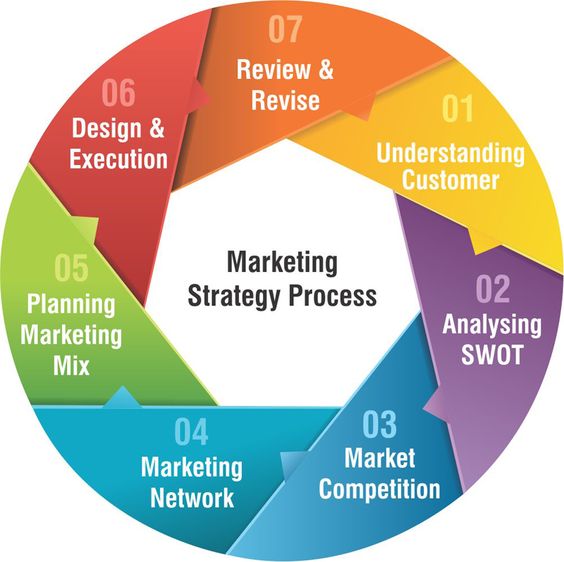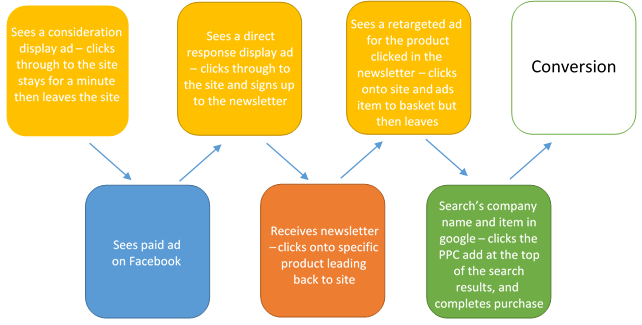Display advertising is very commonly used in a Business to Consumer (B2C) environment, but you don’t see it applied as much in Business to Business (B2B) marketing. This could be because display advertising tends to be more of a direct response format, rather than a branding tool (De Bock, K. 2016), where people look for that click through rate, and try to measure conversion against cost to measure return on investment. As a result display advertising in a B2B context, doesn’t get used very often. But according to King, K (2015), this doesn’t mean that B2B firms shouldn’t use it, the following blog suggests how B2B firms can use display advertising to drive a conversion.
- Use display advertising to gain brand awareness
If display advertising is used successfully in conjunction with accurate retargeting, a B2B company is able to limit their ads to those who have met the segmentation requirements and/or visited the website site. As a result, this can make the company appear a larger and more professional firm from a branding perspective, and makes people and other firms aware of the business. Specific targeting and having the right buying mechanisms in place is key here because an advertiser needs to be interacting with the right audience in the right places (Thorson, E & Duffy, M 2012). For example, below is an image of some B2B display advertising that is on a blog about display advertising, ensuring the potential customer is interested in relevant marketing:
 Taken from here
Taken from here
2. Ensure creative is clear
It is important to ensure the brand creative is clear and concise. Marketing to a B2B consumer, the ad needs to show how the product or service offered can benefit the firms they are selling to. Once an ad has gone through rigorous targeting and segmentation filtering, to be placed in front of the right person, it is vital that creative is eye catching and delivers the message that your consumer wants to see (Plummer, J. et al 2007). If the ad hasn’t gone through retargeting and the first impression of your company is from this ad it is vital that you portray your company accurately to this potential consumer. Include elements such as:
- Company colours and fonts
- Company logo
- Message containing benefit to customer
- Strong call to action
These stages help the association between the brand and its marketing. If they click on an ad and bounce from the landing page, the continuity of the branding will resonate with them if they see another ad (Taskiran, N. et al 2015). Additionally it is important not to clutter the creative with a list of features, it is a small space and display ads aren’t meant for long attention. Again looking at the image example above “Curious about display advertising” and “retargeting: what’s your strategy” outlines what the ad is about clearly, engaging the consumer with concise messaging. The call to action is then nice and obvious, detailing what exactly the consumer will get if they click the ad.
3. Follow up with retargeted marketing
If someone clicked on an ad but didn’t convert it doesn’t always mean that they aren’t interested in the product or service that was offered. B2B environments have long sales cycles and thus need frequent reminding that your product or service is out there. The prospect has already seen your site and has some familiarity with your brand. You don’t necessarily need to state what you do. You just need to give them a quick reminder of what your product or service entails as a reminder. Once again the message here can be refined based on the users journey from the previous click through (Taskiran, N. et al 2015).
Problems with B2B display advertising
There are many problems with display advertising for business to business firms and this could suggest why it is not a commonly used form of marketing for B2B companies. For example, as stated above, the B2B consumer cycle is much longer than the average B2C consumer cycle, where compulsive buys are more frequent (Johnson, N 2015). Results don’t happen right away and prospects need to be nurtured since there are many more decisions that need to be made than that of a single person. A business has to decide as a whole. By running a continuous and constant campaign a marketer is offering continuous exposure, and this is more likely to be rewarded with higher results. Additionally it is important that display strategy is accurate. The people that your ads are targeting need to be highly specified in the segmentation data and selected to ensure their interest in the product or service being offered. Its important to remember that display advertising is not only about brand awareness as different messaging, with differing call to actions will hopefully lead to increasing conversions.
To Conclude…
Display advertising can be a useful method of marketing for all B2B firms on more than just a brand awareness level. Display advertising can drive conversions but the advertiser must remain aware of the issues that surround this method of marketing. Results will take time and there may not seem to be an immediate return on investment. However, ensure targeting and market segmentation is accurate and this will drive conversions for the product or service being marketed.
Further reading:
Debunking The Myths Of B2B Display Advertising
The Complete Display Ads Overview For B2B Marketers
Why display ads matter for B2B companies webinar
References
De Bock, K (2016). Advanced Database Marketing: Innovative Methodologies and Applications for Managing Customer Relationships. New York: Routledge. p212.
Johnson, N (2015). The Future of Marketing: Strategies from 15 Leading Brands on How Authenticity, Relevance, and Transparency Will Help You Survive the Age of the Customer. New Jersey: Pearson Education.
King, K (2015). The Complete Guide to B2B Marketing: New Tactics, Tools, and Techniques to Compete in the Digital Economy. New Jersey: Pearson Education.
Plummer, J. et al (2007). The Online Advertising Playbook: Proven Strategies and Tested Tactics from the Advertising Research Foundation. New Jersey: John Wiley & Sons. p84-85.
Taskiran, N. et al (2015). Handbook of Research on Effective Advertising Strategies in the Social Media Age. USA: Business Science Reference. p109.
Thorson, E. & Duffy, M (2012). Advertising Age: The Principles of Advertising and Marketing Communication at Work. Mason: South-Western. p41.














